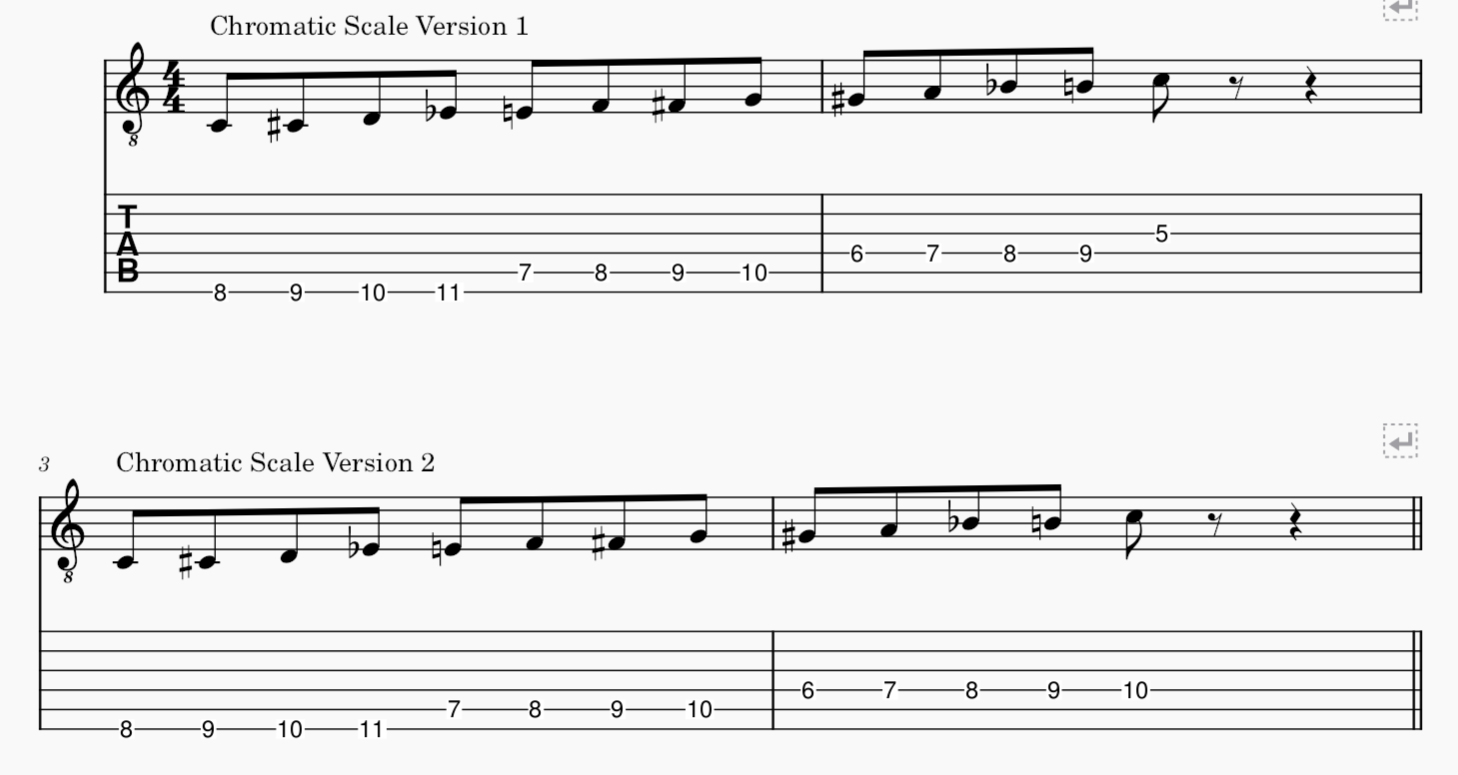How To Get By On Guitar WITHOUT Music Theory - (You Can't)
Dec 07, 2024Music theory can be a sensitive topic for guitarists.
Considering all the talk of modes, intervals, arpeggios, arrangement, 7th chords, song structure, appoggiatura, contrary motion, and all the other lingo, it's easy to see how this would cause one to feel overwhelmed.
Fortunately, there's a simple workaround to this chaos, and I'm gonna share it with you.
By the end of this lesson, you'll learn how to use a simple music theory concept that can explain pretty much any “broken rule” observed in a song.
The Scale Of All Scales
If you have a loose grasp of music theory, then fear not. The only music theory concept you need to know for now is the chromatic scale. Please reference the tabs below on how to play it. You'll notice that there are two different ways to end the scale. Familiarize yourself with both versions to enhance your understanding of the fretboard.

As you can see, there are 12 notes (13 notes including both octaves). Most scales in popular music can be categorized as pentatonic scales (5 notes) or diatonic scales (7 notes). In all scales, we use a series of notes to get from one octave to another (e.g., C to C). In the chromatic scale, we cover all possible notes that exist in between each octave. As a result, we sort of cover all possible scales that can be used since we play all the notes.

Genre Applications & Justifications
Jazz uses the chromatic scale very intentionally. Players of this genre have all sorts of justifications and methods for their madness when they write and analyze their works. They use the chromatic scale intertwined with other scales in a lot of their phrasing to produce the classic jazz sound. The chromatic scale helps jazz players improvise as it's a vehicle to help them get to specific notes.
Death metal uses the chromatic scale in addition to tremolo picking and chugging through palm muted power chords a lot. This combination of guitar skills is used to evoke a frantic, chaotic vibe.
Blues is another style that uses the chromatic scale. It's important to point out that chromatic notes outside of a given key are considered to be accidentals. In blues, the most common scale used is named after its genre: the blues scale. The blues scale takes the already awesome sounding pentatonic scale but adds a bit of chromaticism to it. If you want to make the already awesome pentatonic scale sound even better, just add a single note right in between the 3rd and 4th scale degrees. When you’ve got these three half steps in sequence, it’s almost like having a mini chromatic scale within the pentatonic scale. In this case, the pentatonic scale and the chromatic scale make up the blues scale.

Do NOT Overlook Rhythm
As Victor Wooten brilliantly taught us, there's really no such thing as “wrong notes”. Chromatic notes (accidentals) are not part of a key but are often the coolest sounding notes. When used creatively, the chromatic scale can be one of the coolest sounding scales since it is filled with every possible "wrong note".
However, if there's one thing you can't get by without, it's rhythm. As Victor says, we don’t dance to the key of a song; we dance to the rhythm of it. If you are going to try to write or improvise a lead over an existing arrangement, pay close attention to the rhythm. In fact, pay more attention to the rhythm than anything else (at least at first). From there, you can explore phrases and note options by simply using the chromatic scale. When using the chromatic scale, you can get used to accidentals if you play them in passing to the rhythm.
Conclusion
When you put any musical idea into practice, make sure you’re mindful of rhythm since it’s harder to get by with mistakes that are out of time. Analyzing how music theory concepts, such as scales, apply to specific musical genres can enrich your playing and open the door to endless creative possibilities. If there is just one piece of music theory you’re ever going to learn, let it be the chromatic scale. Now, do I think you’re all set and should avoid learning anything else theory related? Of course not. If anything, having the chromatic scale under your belt can be the first step you take in entering the world of music theory. Don’t view mastery of anything music related as being your end goal because that almost defeats the purpose. The journey should be enjoyed, so have fun with the process of learning and putting the new skills you pick up into practice.
Watch the full lesson here: How To Get By On Guitar WITHOUT Music Theory - (You Can't)
Optimize your practice routine in 5 minutes with my simple, powerful, scientifically driven tool for guitarists.


